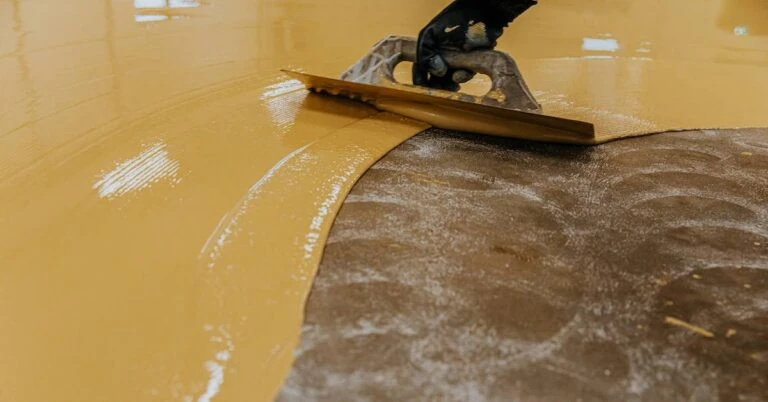Home Decorating Tips


Home Decorating Tips
Painting Over Epoxy Primer: How Soon Can You Start?
Posted on September 11, 2023
Last updated May 27, 2025
By now, you are probably aware that epoxy primers are a must-have for metal or concrete surfaces! These primers allow your chosen surfaces to be ready for whatever material will be applied to them.
While there is definitely no problem with just applying epoxy primer, a coat or two of paint can give character to the surface. However, do remember that timing is key when it comes to a paint job.
So how soon can you paint over a surface with epoxy primer? Continue reading this guide to find out the answer to this question and ensure you get the job done.
Can You Paint Directly Over Epoxy Primer?
The answer is yes, provided that the epoxy primer has cured and the surface is dry.
But how long should you wait before applying a base coat over an epoxy primer? It would actually depend on the primer you used and the drying time specified for it in the product’s instructions or technical data sheet.
For instance, Island Paints Epoxy Primer can take 12 to 24 hours to dry. On the other hand, Island Paints Industrial Epoxy Primer’s drying time is also slated at 24 hours. Other epoxy primers sold on the market can have a shorter or longer drying time too.
Once the recommended drying time has elapsed, inspect the surface. What makes epoxy primers different is their tendency to undergo curing. This refers to the hardening of a substance once it is exposed to air, heat, or chemical additives.
This is why, on top of the initial 24 hours needed for drying time, you may need to wait another 24 to 48 hours for the primer to fully cure before you paint over it. Fortunately, you can speed up the curing process with the help of heating methods. To determine the curing time of your chosen epoxy primer, read the product guidelines or technical data sheet.
Once the recommended curing time has elapsed, check if the surface is ready by lightly touching it with your finger. If it leaves a dent, it may not be ready yet. You can also perform a solvent rub test by putting a small amount of rubbing alcohol or lacquer thinner on the surface. Check for soft areas or discoloration before painting over it.
Other Factors to Consider When Working With Epoxy Primer
Aside from the product’s recommended drying and curing times, take note of other factors that can affect the product’s drying time and subsequent paint application:
- Weather conditions in your area: Climate can shorten or lengthen the epoxy primer’s drying time as well. Obviously, the product may dry faster when applied on a hot or humid day and slower when utilized on a cloudy or chilly day.
- Humidity levels: According to industry experts, if humidity levels in an area above 85%, this can slow down the drying time and even impact the quality of the surface’s finish.
- Thickness of applied product: If you applied thick layers of epoxy primer onto the surface, expect longer drying times since the solvent will need more time to evaporate.
Overall, when you factor in product drying and curing times and other environmental factors, you might want to allot at least three or more days for the application of epoxy primer and paint. This way, you can give your primer enough time to fully dry and cure before painting over it.
Just a disclaimer, though. Do remember that this is just a general estimate. You can increase the number of days you will need for this step, especially if weather conditions are not in your favor, and prolong the drying and curing times of the product(s).
What Happens If You Paint Too Soon?
If you do not plan accordingly, disregard recommended drying and curing times, and paint the surface even if the primer is not yet ready, expect the following problems:
- Poor adhesion of paint
- Wrinkled or flaking paint, resulting in a surface that does not look visually appealing.
- Primer peeling that can happen during the painting process
- Tendency of primer to mix with the paint, causing longer curing times and the appearance of bubbles.
Don’t Forget These Tips When Working With Epoxy Primers and Paints
Before you start working with epoxy primers and your chosen paints, don’t forget these safety guidelines that’ll help you prevent injuries and ensure your timelines are fulfilled without hiccups along the way:
- Know which type of paint is compatible with epoxy primer: Do your research and select paint that can work with your epoxy primer. You can also ask a trusted industry expert. You wouldn’t want to waste time, money, and other resources on products that won’t work well together, right?
- Take note of correct mixing ratios: This is another reason why you should read product instructions or technical data sheets. By doing so, you can achieve ideal adhesion and enhance the primer’s durability.
- Work with clean surfaces: Even before you apply epoxy primer to the surface you are working on, clean it adequately. Remove dust, dirt, debris, or residue on the surface that can prevent optimal adhesion, trigger bubbling or cracking, and negatively affect the quality of your work. If you are working with a metal surface, clean up the rust and grease that have accumulated on it.
- Apply subsequent coats of paint thinly: This helps the product to adhere better to the surface and reduces the risk of drips and the formation of imperfections on the surface. Resist the urge to paint everything at once.
- Wear protective clothing and equipment: When handling and working with your chosen epoxy primers and paints, don’t disregard your safety. Wear protective gloves, goggles, and face masks. Some of the substances found in these products can negatively affect your health if inhaled.
- Take note of storage and disposal guidelines: Store and lock your epoxy primers and paints away from children. Once you are done using the product(s), dispose of these products at a hazardous or special waste collection point. Do not discard them into drainage or sewage systems or throw them together with ordinary household products.
Ready to put the knowledge you gained with your chosen epoxy primers and paints to use? With Island Premium Paints, you can! Learn how you can utilize these two products to your advantage and ramp up your knowledge of construction-related topics with the help of informative articles and guides.
References:
https://www.nobroker.in/forum/how-long-to-wait-for-primer-to-dry-before-painting/
https://epoxyresinsart.com/how-soon-can-you-paint-over-epoxy-primer/
https://bestglitterpaintforwalls.com/what-happens-if-you-paint-over-primer/
Our Products
Our line of high quality paints and products will give your home or project the vibrancy it needs.
Explore Colors
Ready to explore colorful possibiliies today? View our popular paint colo combination palettes for great color schemes and room design ideas for interior and exteriors.



